If you're interested in tracking macros but don't know where to begin, this beginner's guide will walk you through the process and get you started!
Vegan, vegetarian, low-carb diet, weight watchers… I have tried it all. There are a million fad diets out there, and every year it seems there is a new food trend, but for me, it comes down to what I can maintain long-term.
I've had the most success with counting macros, and using a macro diet approach to meal plans. Using daily macros goals allows each person different ways to create a balanced diet with food choices and nutrients you love. Want to learn more about how to track your macros and sustain a healthy lifestyle? Follow along today as I share what I learned about my nutritionist's daily macro goals, fat loss, and meal plans.
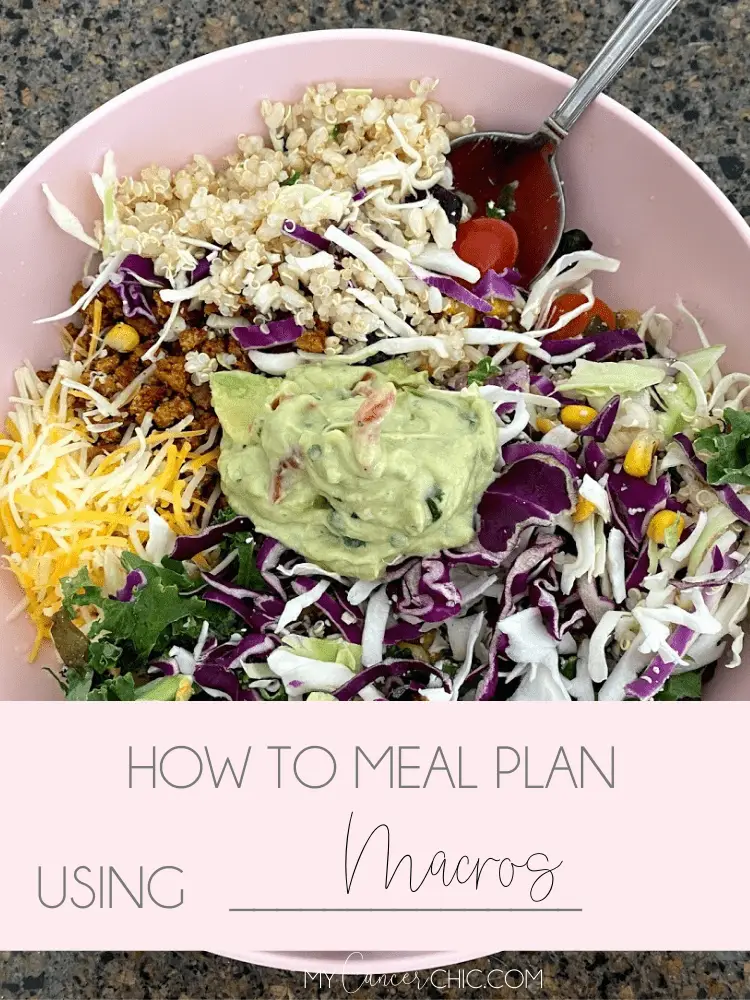
Disclaimer: I am not a medical professional or nutritionist. Everything I share is based on my experience and what I have learned about my situation. Please consult your doctor/nutritionist before implementing any changes.
Tracking Macros for Beginners: The Ultimate Guide
What are Macros?
Macros, or macronutrients, are your body's three primary nutrients. Protein is the most important of these three, as it is responsible for building and repairing muscle tissue. Carbohydrates provide energy for your body to function, and fat provides essential fatty acids for maintaining skin and hair health.
It's essential to understand how daily macronutrients work to set daily macros goals based on your weight loss or weight goal goals, your total daily energy expenditure, and your caloric deficit goal (if you are looking to lose weight). To get the best results from your macros diet, you will want to understand nutrition information and make lifestyle changes you can sustain long-term.
Protein
Protein is an essential macronutrient that helps build and maintain muscle mass. It is found in animal products, such as meat, poultry, fish, nuts, and legumes. Most people will find they are not getting enough grams of protein in their regular diet as the American culture is much more focused on carbohydrates and fast food.
Since you get so much energy and fullness from protein, it is an excellent place to start when adjusting to your eating and fitness goals. The best part is that you can build many different things into your diet to meet your daily protein intake.
Protein = 4 calories per gram
High protein foods: lean beef, salmon, chicken breasts, chicken liver, tuna, eggs, cottage cheese
Carbohydrates
Carbohydrates are another vital food nutrient your body uses to create glucose. These substances include fiber, starches, and sugars. As we dig deeper into macros counting, you’ll better understand what types of carbohydrates spike your blood sugar and which help with your energy balance.
Complex carbs in foods like fruits, vegetables, and whole grains are less likely to spike blood sugar levels than simple carbs (sugars). This is because complex carbs are broken down more slowly by the body and don't cause as big of a rush of insulin. When choosing carbohydrates for your meals, look at nutrition labels and compare the grams of carbs to the grams of healthy fats, fiber, and protein.
Carbohydrates = 4 calories per gram
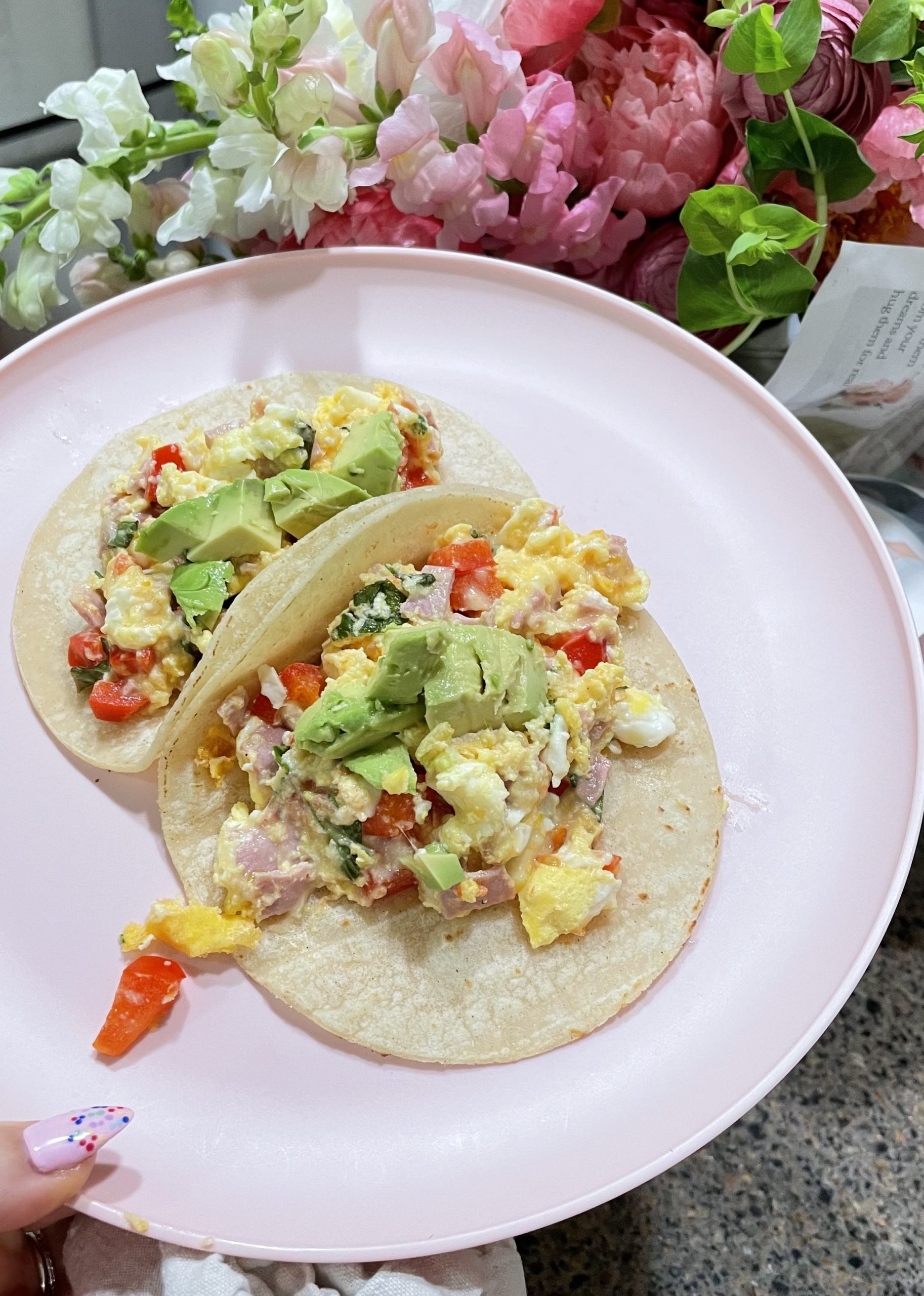
Fat
Fat is a component of the human diet because it helps absorb fat-soluble vitamins, increase satiety, and helps regulate digestion. It is also a great source of high-calorie energy, ideal for long and low-intensity activities, builds cell membranes and certain hormones, and provides a protective lining for organs, and more.
Fat = 9 calories per gram
Foods high in fats: avocados, extra virgin olive oil, chia seeds, yogurt, coconut milk
Many foods contain two or all three types of macronutrients!
Benefits of Counting Macros
Tracking macros can be an excellent way for beginners to understand how food affects their bodies. By counting macros, people can learn what types of nutrients they need and how many calories they should consume daily. This information can help them focus on eating nutrient-dense foods instead of limiting themselves to specific foods or numbers of servings.
Additionally, counting macros can lead to increased education and understanding about nutrition and food. People who track their macros often become more aware of their food and nutritional content.
Tracking macros for beginners can be done easily with vegan or vegetarian lifestyles in mind. Many foods are already broken down into macro ratios, so all that is needed is to keep track of the calories and nutrients consumed.
This can be done using a food diary or tracking app like MyFitnessPal. To ensure that all of the necessary nutrients are being absorbed and utilized, it is crucial to have a healthy diet and exercise routine.
So at a glance, here are some big benefits of tracking macros:
- Flexibility
- Easy to use with a vegan or vegetarian lifestyle
- Focused on nutrient-dense food intake instead of limitations
- This leads to increased education and understanding of nutrition and food
- Great for weight loss and maintenance
- Safe during pregnancy
- Effective long term
- Guilt-free eating out
- Works for the whole family (I make the same meals for my husband but increase portion size)
Counting Macros vs Calories
Counting macros and calories are similar because in both cases, you are tracking your daily intake of food. People generally count their macronutrients when they want to build muscle mass or make sure that they’re maintaining a balance between carbs, fats, and proteins. On the other hand, counting calories seems to typically be done with the sole purpose of losing weight.
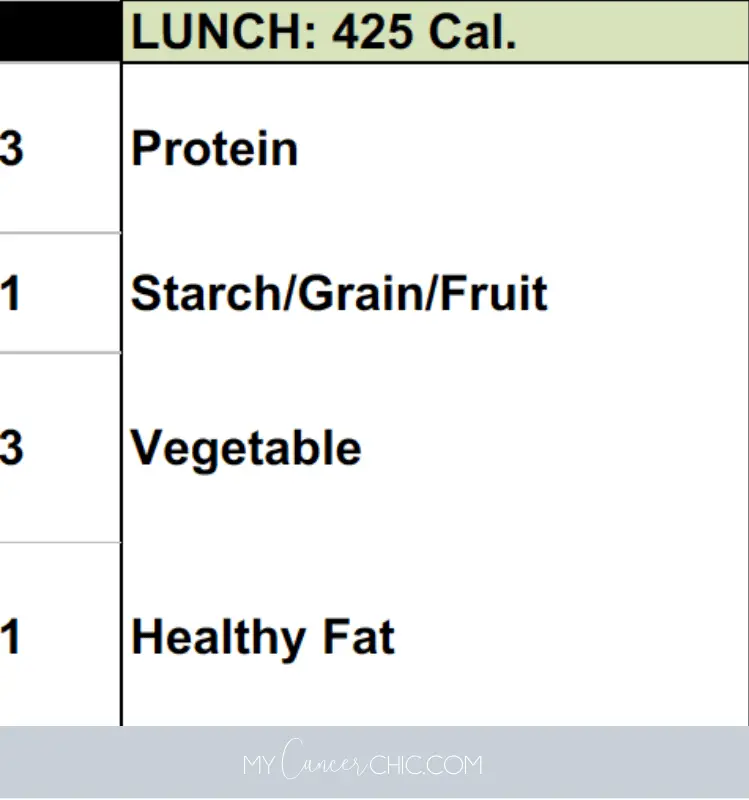
How to Set Daily Macro Goals
If you are using MyFitnessPal to track your eating, the default settings are as follows:
- Carbs: 50%
- Fat: 30%
- Protein: 20%
Keep in mind that percentages can be way off if you calorie goal is not accurate. Talk to your doctor or nutritionist about what your calorie goal should be. My current calorie goal is 1350 based on my weight loss goals. My nutritionist adjusted my daily macro goals as follows:
- Carbs: 35% = 118 grams
- Fat: 35% = 53 grams
- Protein: 30% = 101 grams
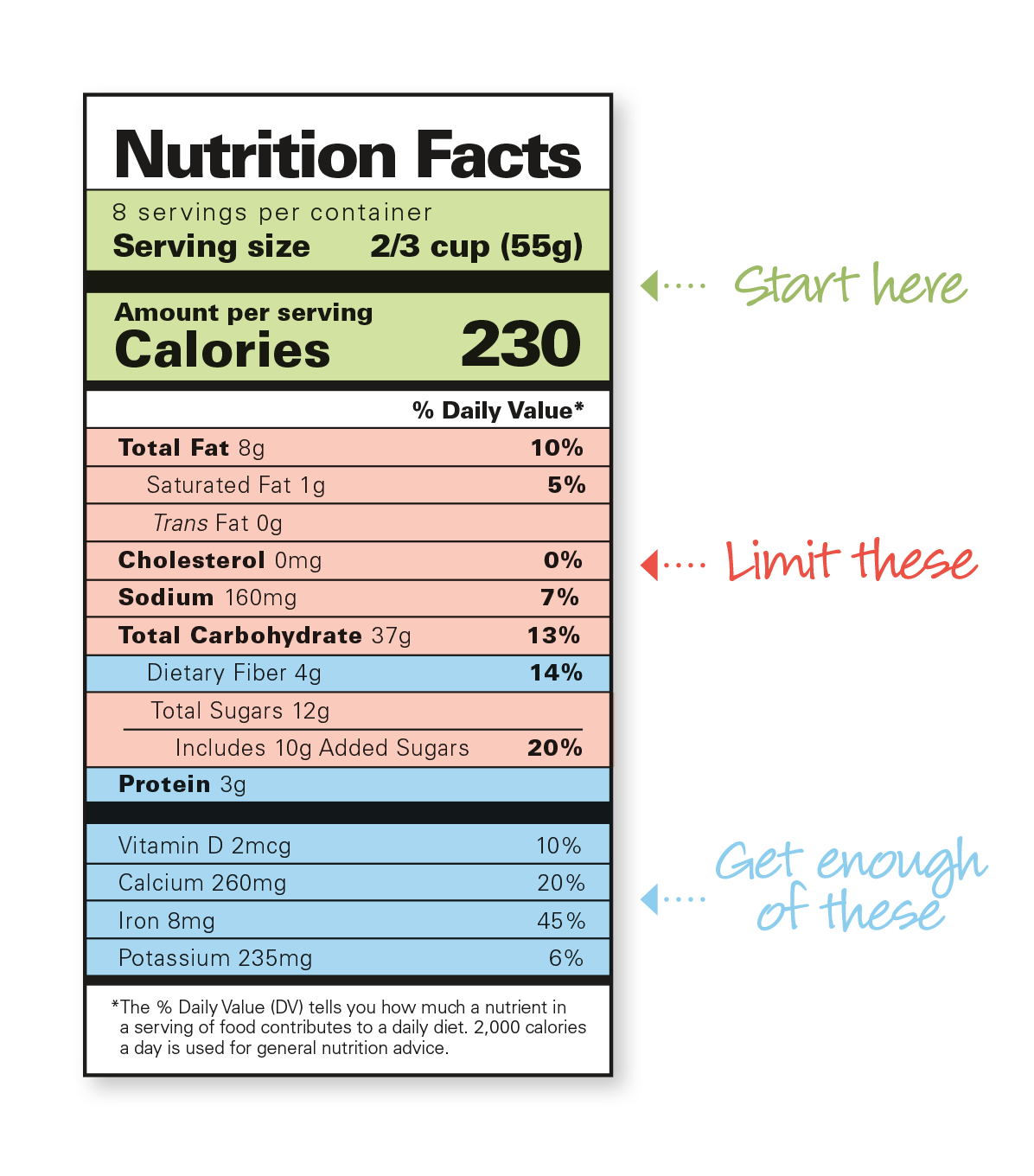
How to Read a Nutrition Label
Reading nutrition labels is a significant first step in taking more ownership of what you eat. Nutrition labels can help you make informed choices about the types of food you eat and how to maximize food to help you meet your overall life goals.
When reading food labels, you’ll want to look at the macronutrient ratio per serving, which will help you track the macro goals you are striving for. You’ll also want to look at the ingredients list to ensure you don’t see additives and ingredients you can’t read or recognize. You’ll also want to pay attention to sugar content. Foods with high sugar tend to add to your calorie intake without the benefit of lean proteins and complex carbohydrates to keep you energized and complete.
How to Meal Plan While Counting Macros
My nutritionist taught me to understand meal planning with macros through serving sizes. You will see in my meal plan below that she helped me see how many servings of macronutrients I need at each meal, and then I can plan around these goals. Once you have your macro goals per meal, you can select various foods based on the serving guidelines.
At first, this may seem a bit confusing, but once you get a sense of what a typical fat, protein, or carb serving should look like, you can easily swap out foods and mix up your meal plan. We will walk through the planning process below.
The serving size database from my nutritionist is something I also refer to regularly. This gives me a good sense of how much of each food will count as a serving. So let's look at the goals above and plan a meal using the database.
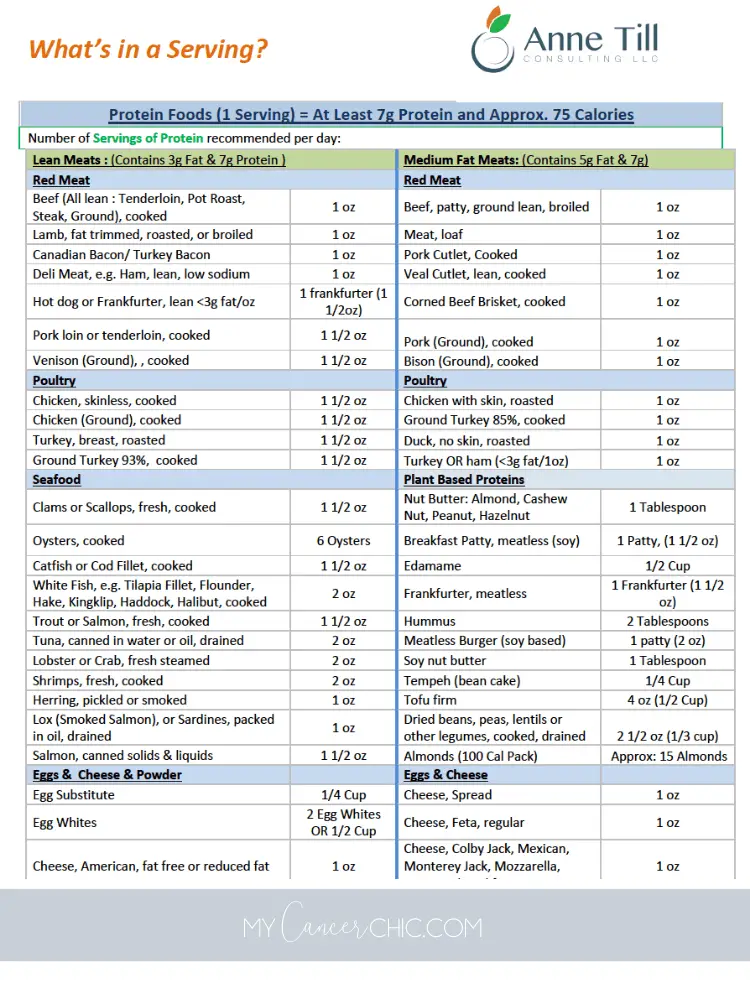
Based on the goals guideline, I know I need 3 protein servings for my lunch.
Looking at the servings guide, my goal will be to eat 21 grams of protein and utilize approximately 225 calories. Sometimes it will be more or less but that is my goal.
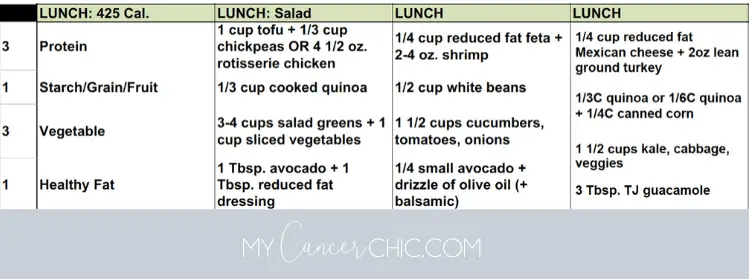
Here are three ways I can reach my macronutrients and calorie goals using different foods. My nutritionist helped me plan the first two options, and I added the third using foods I had at home.
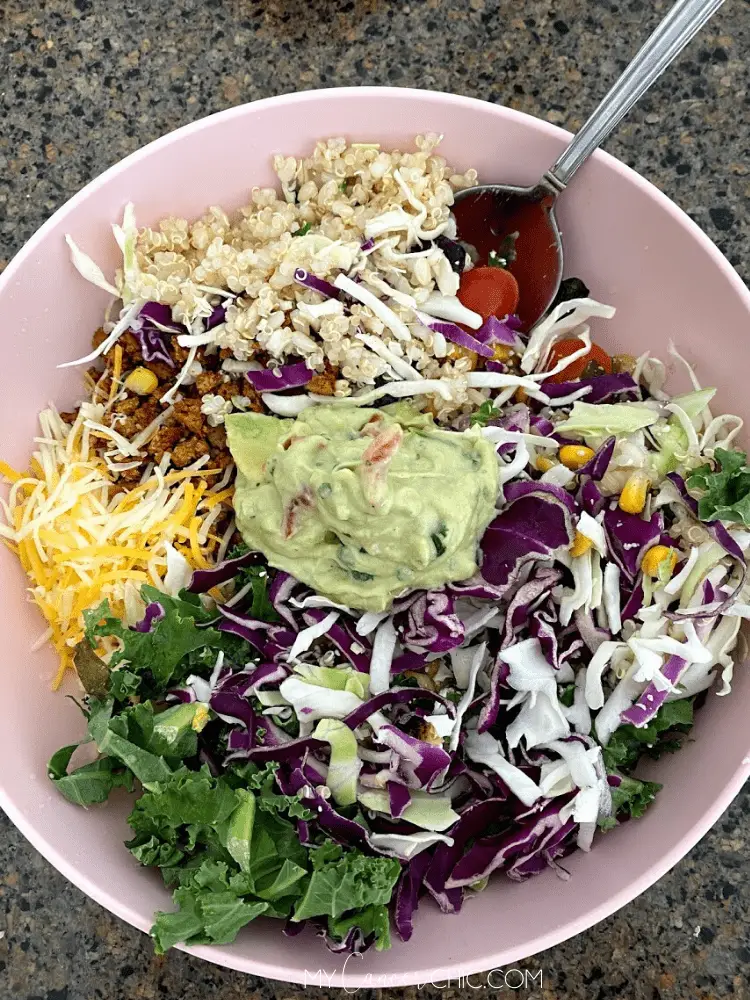
You can see in the table below how I compare the serving goals, the macro goals, the food eaten and how it looks in my FitnessPal.

So now I want you to look at the serving guide list and plan a lunch using my macros goals. Yours goals may end up being different based on your weight and goals but the planning process will be the same.
This is what my whole day of planning would look like and you can easily swap out the foods and make new combinations if you get bored.
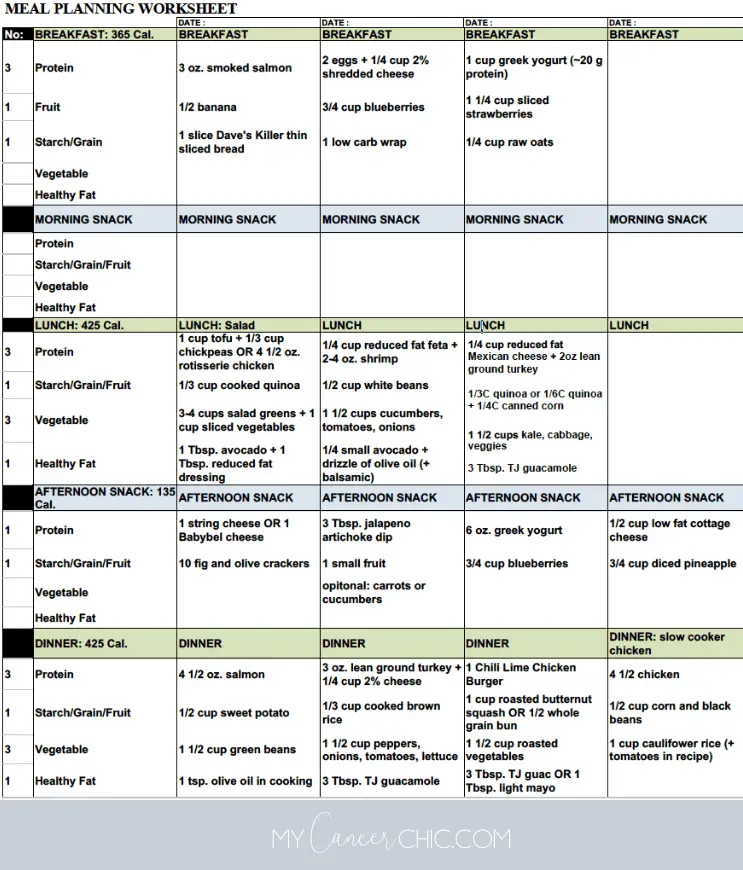
Tips for Eating Out While Counting Macros
Review the menu and plan out your meal ahead of time. If you can’t review the menu ahead of time, prioritize lean protein and fresh produce.
Be mindful of food preparation methods. Avoid heavy cream sauces, fried foods, or overly cheesy dishes (yes, I know they are delicious).
Have a small snack ahead of time. This is one of my biggest tips for all social gatherings and my holiday health guide. Never go hungry, as it influences your decisions and leads to unhealthy choices.
- Review the menu and plan out your meal ahead of time
- If you can't review the menu ahead of time, prioritize lean protein and fresh produce
- Be mindful of food preparation methods. Avoid heavy cream sauces, fried foods, or overly cheesy dishes (yes, I know they are delicious).
- Have a small snack ahead of time. This is one of my biggest tips for all social gatherings and my holiday health guide. Never go in hungry, as it influences your decisions and leads to unhealthy choices.
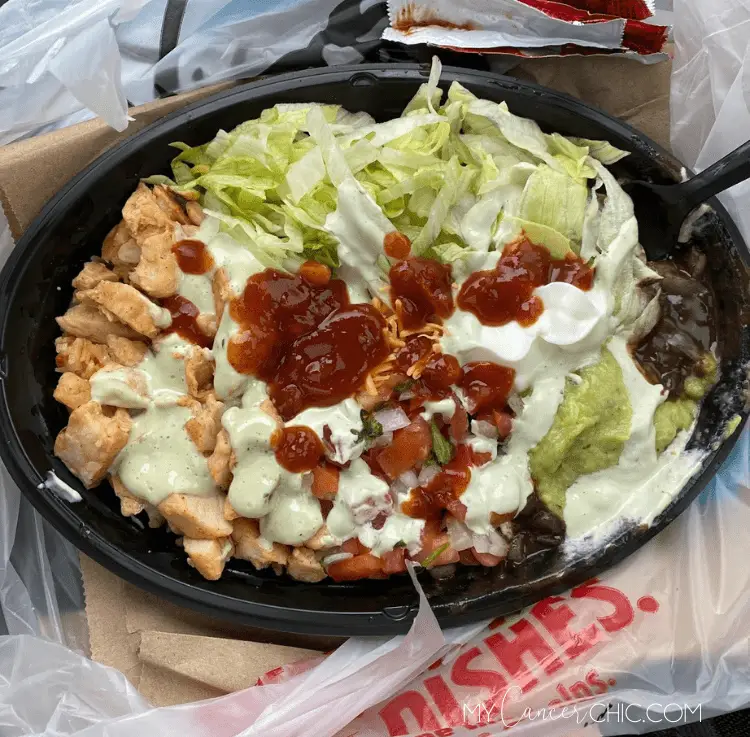
Tips for Success While Counting Macros
Remember that it’s not necessary to hit your macro targets exactly.
You can still meet your goals even if you go over or under a few grams daily. Counting macros is meant to be a good starting point when you want to balance the carbs, fats, and proteins in your diet.
Nutrients are extremely important when selecting your foods.
Unhealthy foods may fit your macro and calorie goals but will not help you feel full or achieve your goals. Avoid fried foods, and highly processed, sugary, or refined carbohydrates.
Don't give up if you don’t meet your goals one day.
I try to treat each meal and each day as a fresh start.
Prepare as many veggies and lean protein snacks as possible on the weekend.
It helps ensure healthy snacking and choices throughout the week.
If you have a sweet tooth like me:
Have a little dark chocolate or frozen yogurt bars on hand. This helps me indulge my sweet tooth while still meeting my goals.
Let’s talk about coffee.
It’s so easy for a sugary latte to throw off your macro goals. While I treat myself to coffee out about two times a week (skinny latte from Starbucks), I try to make my coffee at home each morning with oat milk or coconut milk and liquid stevia. I have a list of my favorite low sugar Starbucks drinks as well as dairy-free Starbucks options.
Related: At-Home Juicing: Is It Worth It?
Macro Friendly Meal Ideas
I love to see what people eat and use their meals to get ideas for my meal planning. So, I figured I would share some of my recent meals.
Chicken sausage, 1 egg scrambled, 1/4 avocado, tomato, Dave’s Killer seed bread, jelly, 1/2 tsp light butter
For more food ideas, you can follow me on Instagram, where I share many of my meals in my stories and review the stories saved to my food highlights.
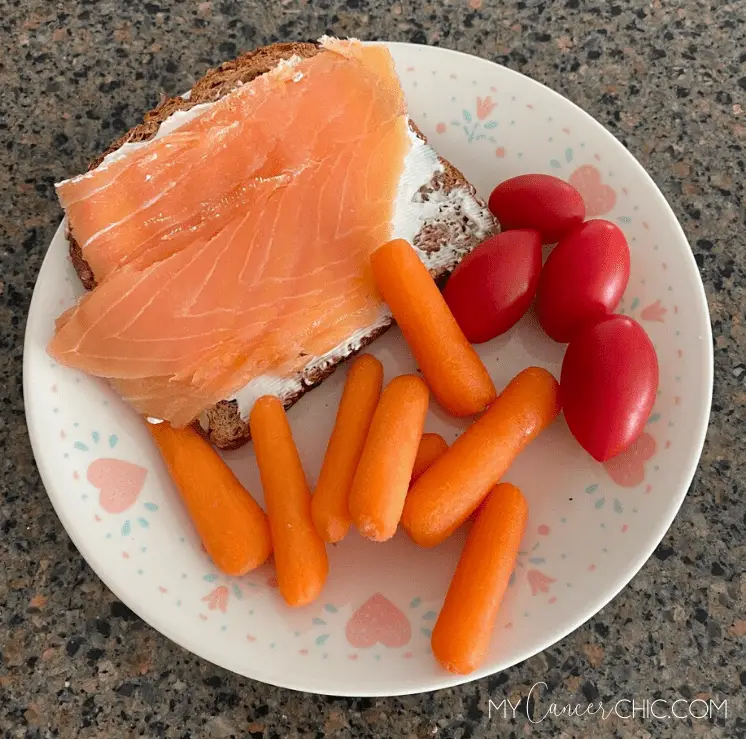
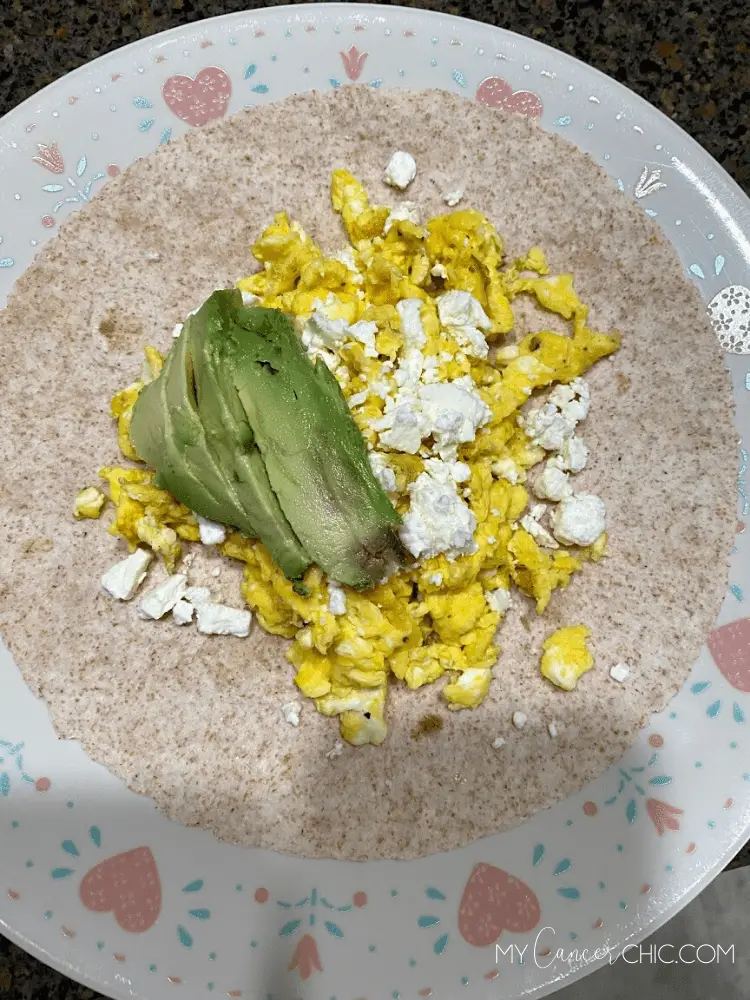

jelly, 1/2 tsp light butter
Is There an App for Counting Macros?
Yes, there are quite a few tracking apps no the market to assist with counting macros. I have been using myFitnessPal for years and found it helpful to pay for the premium version so I can set custom macro goals based on my plan with my nutritionist. In the basic version of the app, myFitnessPal will set generic macro goals for you based on your weight loss/gain goals. MyFitnessPal also gives you great insight throughout the day and at the end of the day as to your macro breakdown, and I turn to it constantly to readjust my eating throughout the day.
How Do I Count Macros without an App?
Check out my nutritionist’s webpage to book a consultation, get recipe ideas and learn more about nutrition. I see Avril and love her! The best part is they offer telehealth (remote services) and accept most insurance.
Bottom Line
When it comes to weight loss, many people turn to track macros as a way to make sure they are getting the right balance of nutrients and daily calories. While this can be an effective method, it can also be complicated. I turned to my nutritionist for help when planning my meals. She helped me learn about macros and how they can help me stay on track while enjoying a variety of foods.
Thanks for reading! Tracking macros is essential to weight loss, but it's not the only thing that matters. Following a nutritionist's advice can help you stay on track and enjoy a variety of foods without feeling weighed down.

Breast cancer survivor, lover of style, beauty and all things pink! Inspiring you to thrive through adversity.

